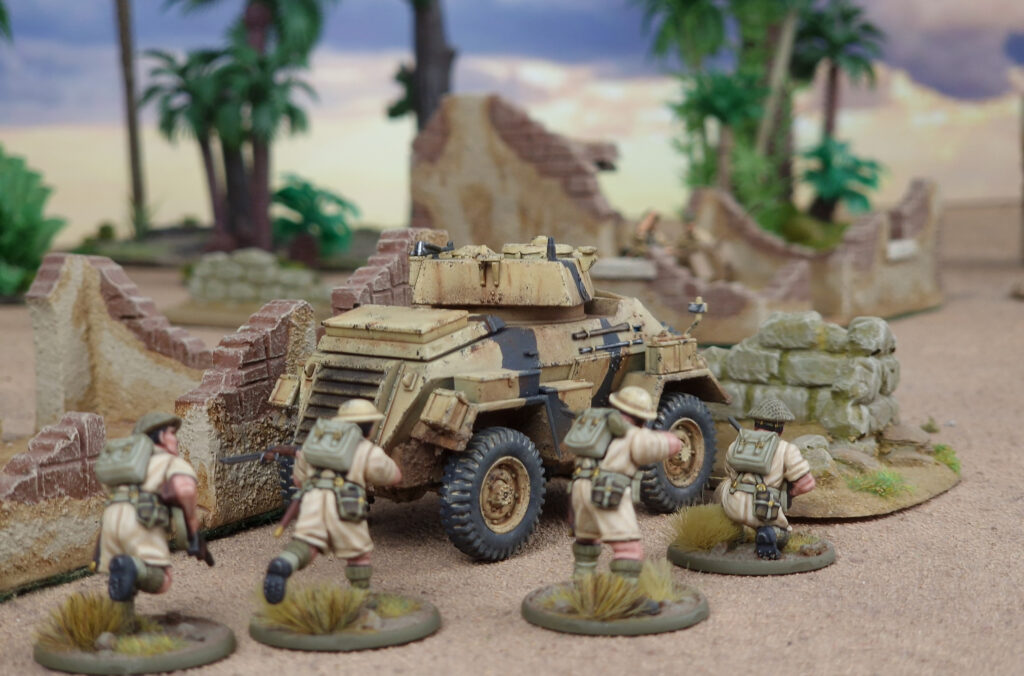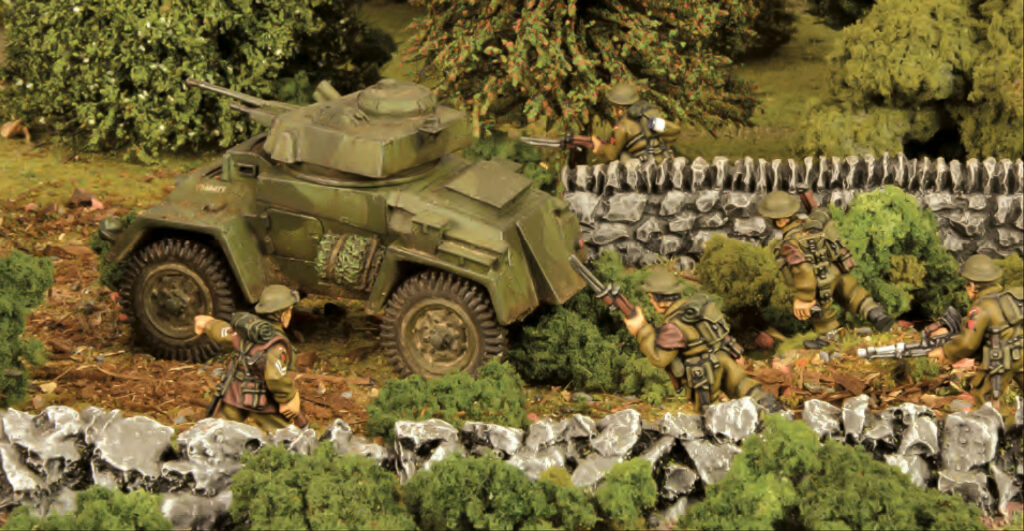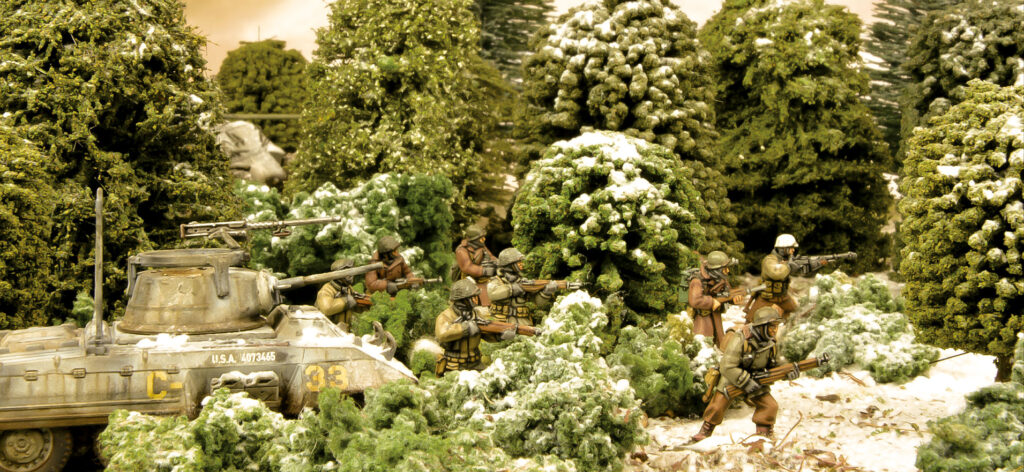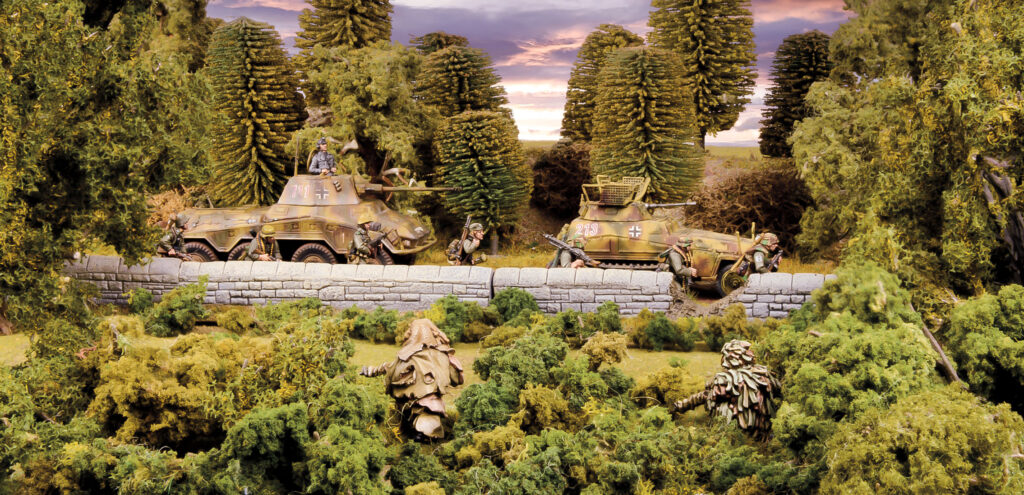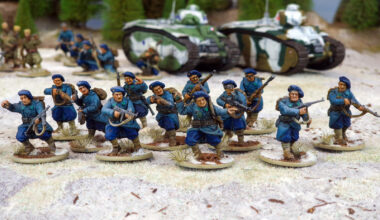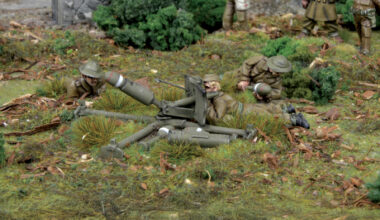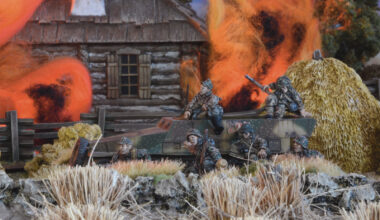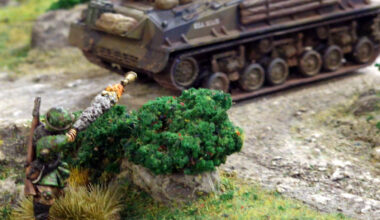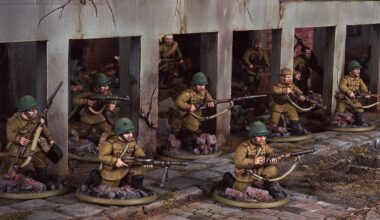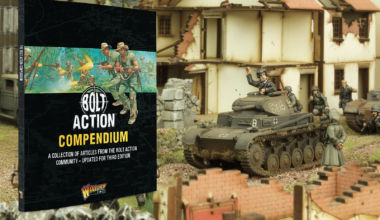Bolt Action: Third Edition sees more armoured vehicles on the table than ever before, courtesy of the Armoured Platoon selector. While this is of course a great opportunity to break out plenty of tracked behemoths and ‘big cats’, it also gives players the chance to field all manner of other combat vehicles. Enter the Armoured Cars – they’re a bit like light tanks, but on wheels! In previous editions of Bolt Action, you could normally field up to one of these, alongside your tank/SPG/other armoured vehicle of choice – and no more. Now, however, with far fewer restrictions, there’s an enormous amount of freedom in how you build your lists, and in this edition, armoured cars can really shine.
We should probably start by defining what an armoured car actually is! In Bolt Action terms, this is very slightly more complex that it might at first seem – but only slightly. An armoured car needs to have two things; armour and wheels. That is to say, it must be a vehicle with a Damage Value of at least 7+, and the Wheeled characteristic. The majority of armoured cars will have a 7+ DV (indeed, that Damage Value bracket is actually named ‘Armoured Car/Carrier’), but there are quite a few out there with heavier armour. Nevertheless, the wheels mean that they’re armoured cars! This means that we’re not looking at tracked vehicles or half-tracks in this article, no matter their Damage Value or other abilities – we’ll save them for an in-depth look another time!
Let’s start ourselves out with a couple of example armoured cars! The brand new Italian Autoblinda AB41/43, currently on pre-order, will do nicely for one, and for the other we’ll take the British Humber Mk IV from the upcoming Armies of Great Britain. These are good indicators of the two main ‘flavours’ of armoured car, differing in their main armament and thus battlefield role. The AB41 mounts a light autocannon, while the Humber has a light anti-tank gun. In most other respects they’re more or less the same – 7+ DV, wheels, the Recce special rule, and an MMG here and there. We can see that the AB41 is blessed with Dual Directional Steering and a very odd rear-facing MMG, but the basic chassis is the same beast – at least in terms of Bolt Action mechanics.
Now then – we’ve established our baselines, so let’s look at strengths and weaknesses, and some tactical use-cases. The main weakness is a fairly obvious one – a 7+ DV isn’t much cop at stopping anything other than small arms fire! If even a light anti-tank gun gets a hit on your armoured car, you could be in for a world of hurt. The solution to this is simple – don’t get hit! This is where the Recce rule comes in handy, enabling you to get your armoured cars out of trouble in a hurry. Remember, though, this uses your car’s activation for a turn, so picking and choosing your spots to Recce is a skill all of its own. As armoured cars are (usually) smaller than tanks, you can also get creative with hiding them behind terrain to either stay out of line-of-sight, or maximise their cover saves.
In addition, armoured cars usually pack fewer weapons than true tanks – normally they’ll have at least one fewer machine gun, but as we can see with the AB41, that’s not always the case! In practical terms, this means you’ve got to put more effort into ensuring that you’ve given yourself the best possible chance to score hits when the opportunity arises. Luckily, armoured cars are well-placed to do just that!
In terms of strengths, mobility is absolutely the biggest friend of the armoured car. Able to Advance 12” and Run 24” (and you can double those numbers on a road!), you can put a car where it’s needed in a hurry. There’s a couple of ways I like to use this mobility on the tabletop. With the Humber, a bold dash past an enemy tank right at the end of a turn can yield a point-blank shot at the side or rear armour, giving the light AT gun a great chance to punch above its weight. If you do this with the last activation of the turn, then your Humber can try to Recce its way out of any trouble in the next turn – or keep going, and blast something else. With the Autoblinda, I might look to make a wider flanking manoeuvre. From a wide position, I can try to set up a cheeky side shot on an enemy vehicle, using AP rounds, or bypass some pesky intervening terrain and catch an infantry unit or weapon team with enfilading HE fire.
The next big strength of armoured cars is that they normally cost significantly fewer points than their be-tracked, heavily armoured cousins. I’ve always said that the best upgrade you can buy one of your dudes is another dude to stand next to him, and this is equally true of vehicles – particularly with Third Edition’s Armoured Platoons. If one armoured car is good, then two (or more) are definitely better! You can either double up on one configuration for extra punch, or mix and match to ensure tactical flexibility. You could even do away with tanks entirely, and have all of your armour be of the wheeled variety – actually quite a popular tactic in some competitive circles! Some of the larger armoured cars, like the AEC Mk III or legendary Puma, even start to encroach into ‘tank territory’ in terms of their armour and weaponry, making them the perfect centrepiece for an all-wheeled Armoured Platoon.
Want to get around the table quickly, and deploy effective light firepower where it’s needed most? You need an armoured car (or two, or three)! You can see our extensive range of wheely good vehicles below, alongside their tracked compatriots. Let’s go car shopping!

